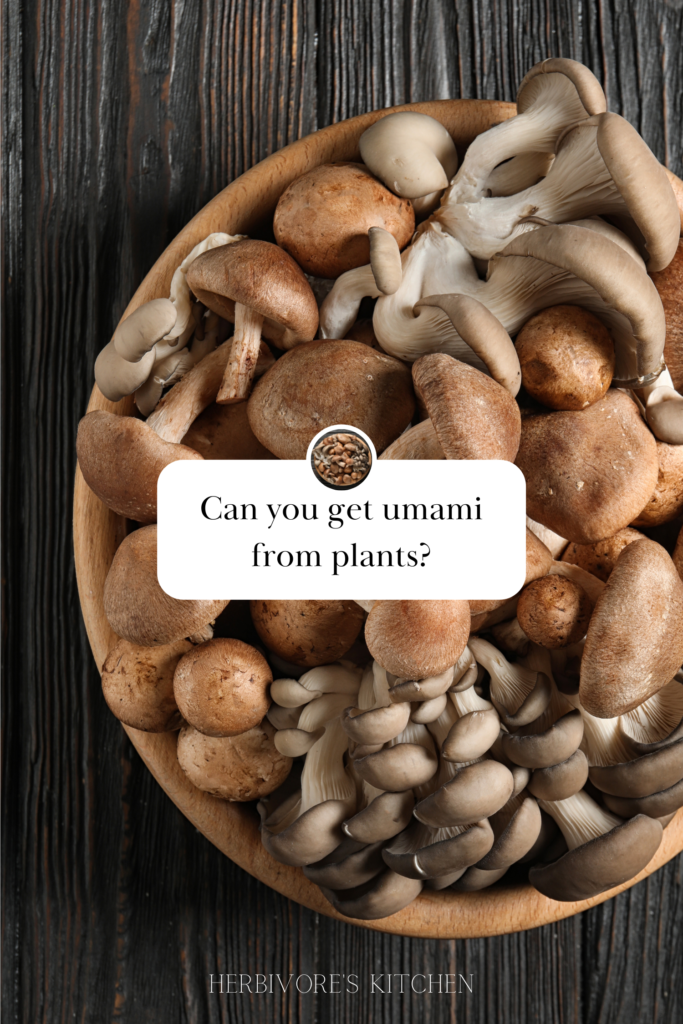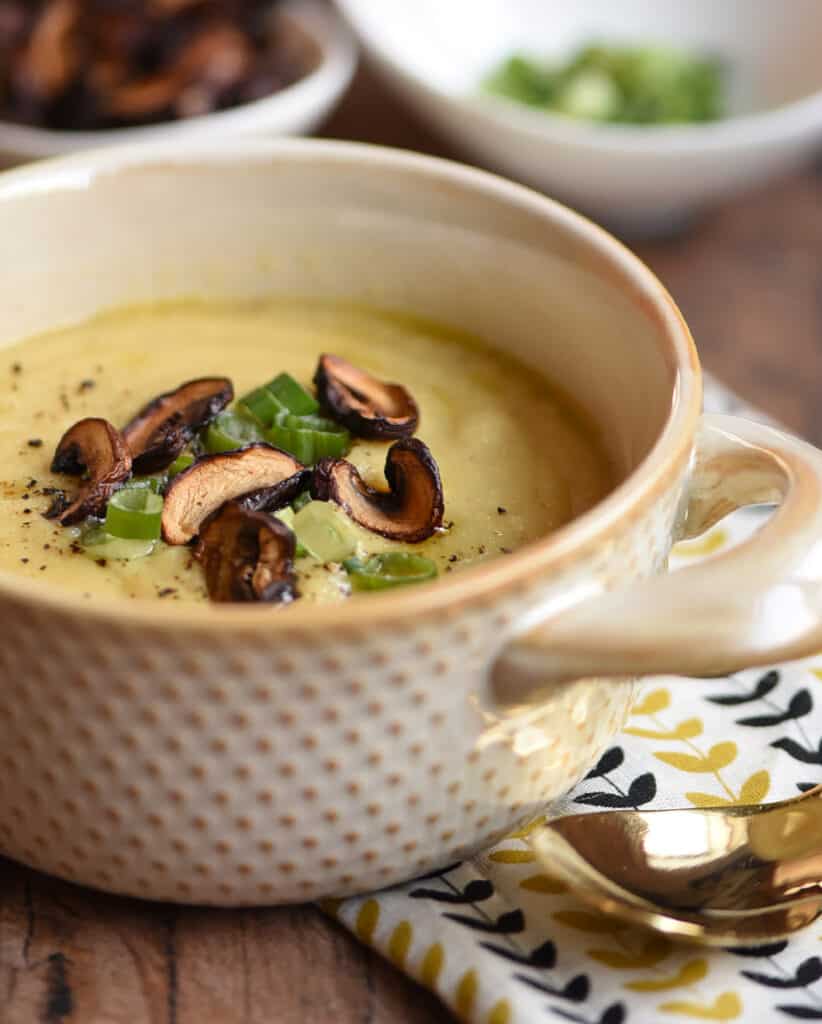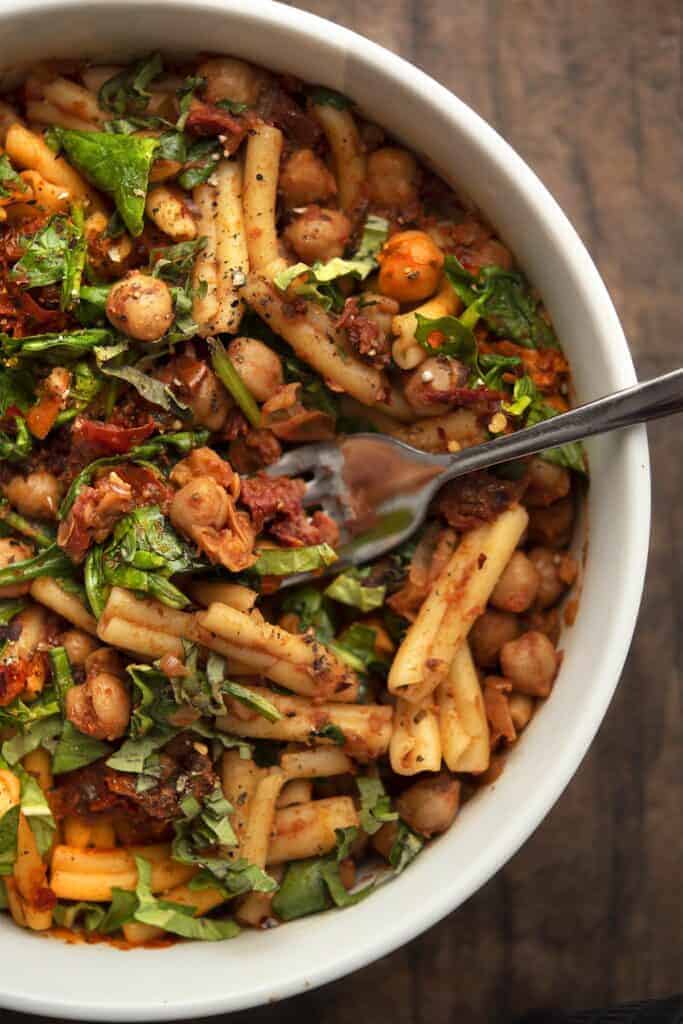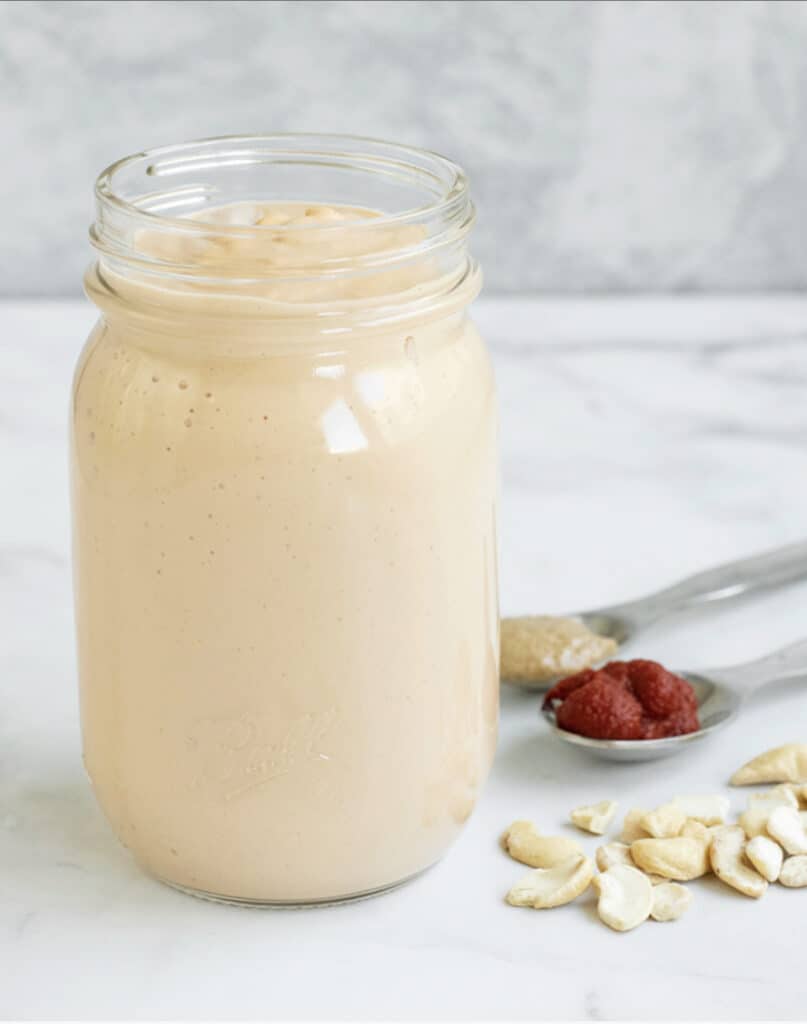This Vegan Umami: How to Get More Flavor From Plant-Based Meals post includes affiliate links. When I find a great product or service, I like to share it with my readers. Sometimes I use affiliate links so I can earn a commission for my recommendations. Thank you for your support!
How to Get the Most Flavor from Plant-Based Meals
Do you think plant-based cooking has to be bland?
Not at all! In fact, there are plenty of plant-based sources to draw flavor from. In this blog post I’ll teach you all about vegan umami and how to get the most flavor from your plant-based meals!

What is Vegan Umami?
Umami is Japanese word the savory, one of the five basic tastes. The umami taste is the body’s response to the presence of glutamate, inosinate and/or guanylate in food.
What is an Example of Umami?
Umami is most commonly associated with meats and aged cheeses, but it can also be found in plants. To understand umami, think about the tang of parmesan cheese or what a splash of soy sauce does to a bowl of plain rice.
What Does Umami Do to the Body?
When the taste receptors sense umami, our flow of saliva increases and our body anticipates protein. It then prepares to digest those proteins.
Do Vegetables Have Umami?
So…how do you get umami without meat?
Remember, it’s not meat that triggers the sense of umami, but the presence of glutamate, inosinate or guanylate.

For example, glutamate is present in tomatoes, onions, garlic, spinach, kombu, asparagus, soy sauce, miso paste, broccoli, peas, nutritional yeast, mushrooms, potatoes & beets. Fermentation and aging increases the levels of glutamate and guanylate, which is why miso paste and soy sauce – both made from soybeans – are high on the list of plant-based foods that contain umami.
How to Be the Master of Vegan Umami
The trick to highlighting umami in plant-based foods is to layer in the flavors. That’s why miso broth calls for dashi and why I add miso paste to my Vegan Mushroom Broth.

What is dashi? Dashi is a Japanese soup stock made with kombu (seaweed), bonito flakes, dried sardines, dried shiitake mushrooms, dried shrimp, dried scallops, adzuki and soybeans. Vegan versions can be made by eliminating the fish products.
Miso paste, as described above, contains glutamate while dried mushrooms are high in guanylate. For non-vegans, the addition of bonito flakes, dried sardines, shrimp and scallops adds inosinate.
Another rule of thumb – the riper the vegetable, the higher the umami. So, look for the ripest of tomatoes. Or, better yet, use tomato paste. The high concentration leads to a ton of umami, especially if you sauté it before adding any liquids to your dish.
Recipes with Plenty of Plant-Based Umami
Umami Bomb Vegan Mushroom Broth. I make this broth for my ramen noodle bowls, but it’s a great sipping broth as well. It consists of a water simmered down with mushrooms (fresh & dried), onions, garlic and ginger. After the broth has been reduced, I strain out the whole ingredients and add a miso slurry, made with miso paste and soy sauce.
Vegan Penne Alla Vodka
This tomato sauce recipe has forever ruined jarred spaghetti sauce for me. The combination of sauteed tomato paste, slow-cooked onions & garlic and nutritional yeast make this a plant-based umami masterpiece.
Vegan Bibimbap with Korean Tofu Crumble and Pickled Vegetables
This Korean dish has plenty of umami-forward ingredients, including sauteed shiitake mushrooms and quick-pickled vegetables (remember that fermentation increases umami). The crispy fried rice doesn’t hurt either!

Vegan Cauliflower & Potato Soup
Yes, this creamy soup includes slow-cooked onions and garlic. And potatoes of course, all plant-based ingredients that include umami. But the secret to making this soup stand out? Miso paste. That’s right. I add a little bit of yellow miso paste and this soup becomes an umami bomb!
Chickpea, Spinach & Sundried Tomato Pasta
This dish contains several umami-forward ingredients. Plus, pasta. Sundried tomatoes are a highly concentrated source of vegan umami. Add sautéed tomato paste, slow-cooked onions and garlic and spinach and this easy weeknight vegan recipe is sure to make everyone happy.
The Best Vegan Nacho Cheese Sauce
Remember when I said aged cheeses are high in umami? Well, this is the vegan version of umami-infused vegan cheese. This recipe includes tomato paste, miso paste, onion, garlic AND nutritional yeast. Whether you decide to top your vegan nachos with this cheese sauce or use it as a pretzel dip, you’ll get an umami boost in every bite!
About Herbivore’s Kitchen

Herbivore’s Kitchen is a plant-based food blog started by me, a vegan home chef, cookbook author, aspiring food photographer and how-to-be-a-better-food-blogger junkie. You’ll mostly find creative and tasty vegan recipes and detailed deep dives into vegan ingredients (check out my Vegucation section) on my blog. I love knowing as much as I can about the food that I make. I’m also really into running a food blog as a business, so I’ve also got a section of my blog titled: Confessions of a Food Blogger where I get into the nitty gritty on how to build, manage, market and monetize a food blog.




